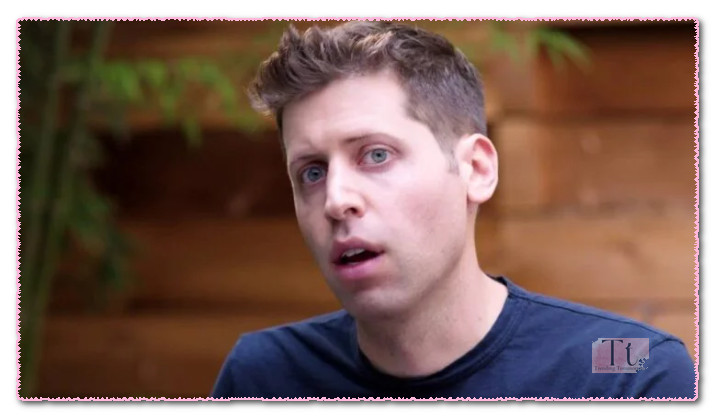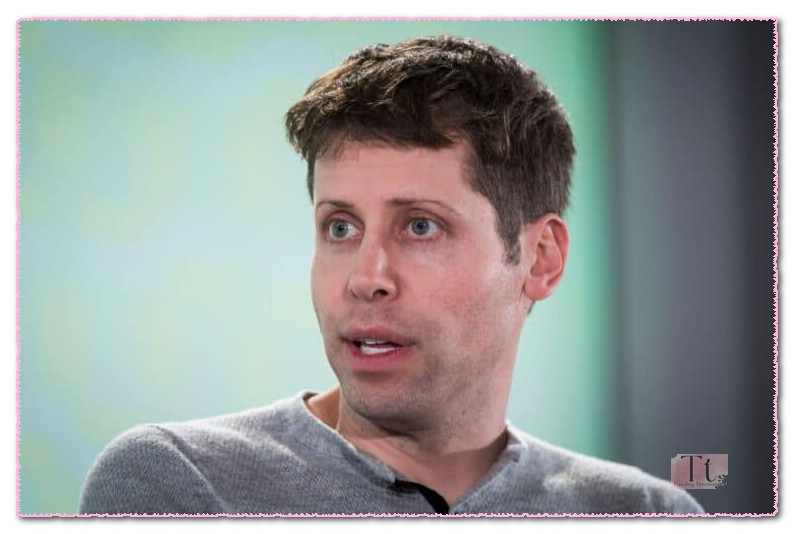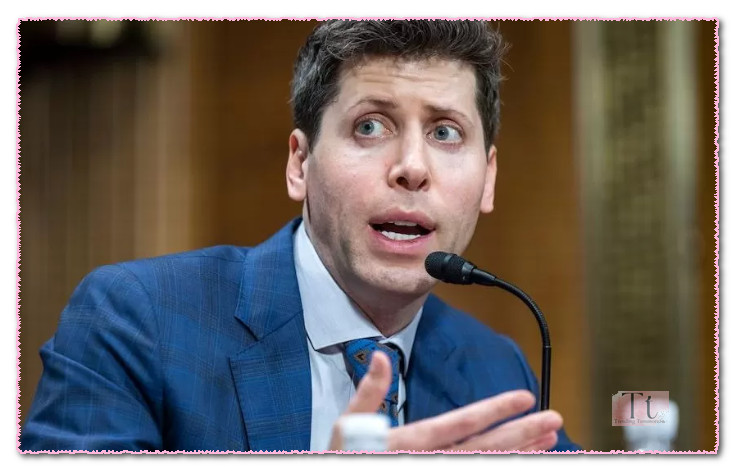Co-founder and CEO Sam Altman has been ousted from his position following a review that revealed concerns about his communication transparency with the board of directors. This move has raised questions and uncertainties about the future of OpenAI and the broader artificial intelligence (AI) industry.
Table of Contents
Firstly, the paragraph highlights the reason behind Altman’s departure – a lack of consistent candor in his communications with the board of directors. Effective communication is crucial in any organization, and in the context of OpenAI, where cutting-edge AI technologies are developed and implemented, transparency and open dialogue are even more critical. The board’s loss of confidence in Altman’s leadership suggests that these communication issues may have had a significant impact on decision-making and the overall direction of the company.

The reference to Altman catapulting ChatGPT to global fame in the past year underscores his role in the company’s success and the widespread recognition of OpenAI’s work in the field of natural language processing and AI. ChatGPT, developed by OpenAI, has gained immense popularity for its ability to generate coherent and contextually relevant human-like text. Altman’s sudden and mostly unexplained exit adds an element of intrigue and uncertainty to the situation. Given his prominence as a voice in Silicon Valley on the promise and potential dangers of AI, his departure could have ripple effects on the industry.
The mention of Mira Murati, OpenAI’s chief technology officer, taking over as interim CEO adds another layer to the story. Murati stepping into the interim role suggests a need for immediate leadership stability while the company searches for a permanent replacement. This transition period is crucial for OpenAI to navigate potential challenges and maintain its momentum in the rapidly evolving AI landscape.
Sam Altman’s Departure: Unraveling the Evolution of OpenAI and the Future of Generative AI
The paragraph leaves readers wondering about the details surrounding Altman’s exit. The lack of specific information about the nature of the communication issues or the events leading up to the board’s decision leaves room for speculation. This lack of clarity can contribute to the uncertainty mentioned in the paragraph, as stakeholders in the AI industry may be left to ponder the implications of Altman’s departure on OpenAI’s future strategy, research direction, and partnerships.
The provided paragraph delves deeper into the developments at OpenAI, shedding light on the resignation of another co-founder and top executive, Greg Brockman, from his role as the board’s chairman. Additionally, it mentions Brockman’s subsequent statement on the X platform, formerly known as Twitter, where he declared his resignation from OpenAI in response to the day’s news.

Greg Brockman’s decision to step down as the board’s chairman while continuing his role as president within the company suggests a reconfiguration of leadership roles at OpenAI. However, the unexpected announcement on X, where he explicitly states, “based on today’s news, I quit,” adds a layer of complexity and raises questions about the nature of the news that prompted his departure. This abrupt move by Brockman introduces an element of discord within the company’s leadership and further contributes to the uncertainty surrounding OpenAI’s future.
The paragraph also highlights the reticence of OpenAI to provide details about the nature of Sam Altman’s alleged lack of candor. The statement cites that Altman’s behavior was impeding the board’s ability to fulfill its responsibilities. The lack of specificity regarding the communication issues raises curiosity about the internal dynamics of OpenAI and the factors that led to such a significant decision by the board. The company’s silence on these matters fosters speculation and leaves stakeholders, including employees, partners, and the broader AI community, in a state of uncertainty.
Sam Altman’s statement on X expressing his love for his time at OpenAI and the transformative impact it had on him personally, as well as on the world, adds a human touch to the narrative. Altman’s acknowledgment of the talented people he worked with and his promise to share more about his future endeavors hint at a positive reflection on his time at OpenAI, despite the circumstances surrounding his departure. However, the lack of details about the reasons behind his exit leaves room for interpretation and speculation.
The mention of a world tour where Altman was mobbed by adoring fans in London underscores the global recognition and impact of OpenAI’s work, particularly the success of ChatGPT. Altman’s role as a prominent figure in the field of generative AI, technology capable of producing novel content like text and imagery, adds context to the significance of his departure. His influence extended beyond the company itself, making him a representative face of the advancements and challenges in artificial intelligence.
Sam Altman’s Leadership and OpenAI’s Evolution
The paragraph provides additional context about Sam Altman’s role and influence in the field of artificial intelligence, shedding light on his recent activities, predictions, and impact on the industry. It also touches on criticisms and controversies surrounding OpenAI, as well as the company’s board composition and key business partner, Microsoft.
Sam Altman’s engagement with heads of state and participation in the CEO summit at the Asia-Pacific Economic Cooperation (APEC) conference in San Francisco underscores his role as a key figure in the global discourse on AI. The fact that OpenAI is based in San Francisco, a hub for technological innovation, emphasizes the company’s position at the forefront of AI development. Altman’s involvement in high-profile events reflects OpenAI’s commitment to shaping the future of AI and its recognition as a leading player in the industry.
Altman’s prediction that AI will be “the greatest leap forward of any of the big technological revolutions we’ve had so far” speaks to his optimistic view of AI’s potential impact. However, his simultaneous acknowledgment of the need for guardrails highlights the awareness of the potential risks and dangers associated with the rapid advancement of AI. This dual perspective reflects a nuanced understanding of the technology’s transformative power and the responsibility to manage its implications responsibly.
The paragraph introduces a counter-narrative by mentioning criticism from some computer scientists who argue that the focus on far-off risks distracts from the real-world limitations and harms of current AI products. This criticism aligns with ongoing debates in the AI community about the ethical considerations and potential consequences of deploying AI systems without adequate safeguards. The reference to the U.S. Federal Trade Commission launching an investigation into whether OpenAI violated consumer protection laws adds a layer of regulatory scrutiny, suggesting that the company’s actions are under public and governmental scrutiny.
The composition of OpenAI’s board, featuring key figures such as chief scientist Ilya Sutskever, Quora CEO Adam D’Angelo, tech entrepreneur Tasha McCauley, and Helen Toner of the Georgetown Center for Security and Emerging Technology, provides insight into the governance structure of the company. Including perspectives from non-employees and individuals with diverse backgrounds could contribute to a more comprehensive decision-making process, although the specific roles and influence of each board member are not detailed in the paragraph.
The Complexities of Board Dynamics: Elon Musk’s Resignation
The paragraph addresses OpenAI’s significant business partnership with Microsoft, which has invested billions of dollars into the startup and played a crucial role in providing the computing power for its AI systems. Microsoft’s statement expressing continued commitment to Mira Murati and the OpenAI team despite the leadership transition signals stability in the partnership and underscores the collaborative nature of the relationship.
The closing statements provide a brief overview of Sam Altman’s background, portraying him as a Silicon Valley wunderkind since his early 20s. Altman’s role as the president of the startup incubator YCombinator in 2014 is highlighted, emphasizing his effectiveness and benevolence, as described by YCombinator co-founder Paul Graham. This perspective offers a glimpse into Altman’s reputation within the industry and his ability to lead and navigate the complex landscape of startups.

The paragraph provides a detailed overview of OpenAI’s evolution, its shift from a nonprofit to a for-profit structure, the departure of key figures such as Elon Musk from the board, and recent developments, including Sam Altman’s exit. It also touches on OpenAI’s strategic decisions, business focus, and Altman’s involvement in various ambitious projects outside of OpenAI.
OpenAI’s initial establishment as a nonprofit in 2015 with financial backing from high-profile figures like Elon Musk signaled a commitment to advancing digital intelligence for the benefit of humanity without the constraint of financial returns. This philanthropic approach aligned with the organization’s mission to prioritize societal impact over profit generation. However, in 2018, OpenAI underwent a significant transformation by incorporating a for-profit entity, Open AI LP. This shift marked a strategic pivot, enabling the organization to explore commercial avenues while maintaining a nonprofit governance structure.
The incorporation of a for-profit entity coincided with OpenAI’s release of its first-generation GPT (Generative Pre-trained Transformer) language model, a breakthrough in natural language processing and AI. This model, designed to mimic human writing, garnered widespread attention and positioned OpenAI as a trailblazer in the field of generative AI.
Elon Musk’s resignation from OpenAI’s board around the same time added a layer of intrigue to the organization’s dynamics. The explanation provided by OpenAI cited a potential conflict of interest arising from Musk’s involvement with Tesla’s self-driving systems. Musk’s departure, despite being a co-chair of the board, underscored the complexities of managing potential conflicts within the AI industry, especially as it intersects with other technological domains like autonomous vehicles.
While OpenAI’s board maintained its nonprofit governance structure, the organization increasingly focused on capitalizing on its AI technology. The strategic move to tailor its popular ChatGPT chatbot for business customers exemplified OpenAI’s efforts to monetize its technological advancements. This shift indicated a recognition of the commercial potential of its AI models beyond their initial research-oriented applications.
Sam Altman, as the CEO of OpenAI, played a pivotal role in shaping the organization’s direction. His prominence as the face of generative AI technology was evident at OpenAI’s first developer conference, where he showcased a vision for the future involving AI agents assisting with various tasks. The subsequent announcement of pausing new subscriptions to the premium version of ChatGPT due to capacity constraints highlighted the overwhelming demand for OpenAI’s AI products.
OpenAI’s Commercial Pivot: From Nonprofit to Business Focus
The sudden nature of Altman’s exit raised eyebrows in the industry. Analysts like Arun Chandrasekaran from Gartner acknowledged Altman’s significance in the field of generative AI and deemed his departure shocking. However, the analysts also noted that OpenAI possessed a deep bench of technical leaders, emphasizing that the organization’s next executives would face challenges related to scaling the business and meeting regulatory expectations.
Forrester analyst Rowan Curran provided a perspective suggesting that Altman’s departure, while sudden, might not indicate deeper business problems. This interpretation points to the possibility that Altman’s exit may be related to individual issues rather than systemic challenges within OpenAI.

The paragraph concludes by providing insights into Sam Altman’s diverse interests and ventures outside of OpenAI. His involvement in ambitious projects such as Helion Energy for fusion reactors, Retro Biosciences for biotechnology extending human lifespan, and Worldcoin, a biometric and cryptocurrency project, highlights Altman’s multifaceted approach to technology and innovation.
Conclusion
In conclusion, the provided paragraphs collectively paint a vivid picture of the evolution and current state of OpenAI, a prominent player in the field of artificial intelligence. Initially founded as a nonprofit with a philanthropic mission to advance digital intelligence for the benefit of humanity, OpenAI underwent a significant transformation in 2018, incorporating a for-profit entity and simultaneously releasing its groundbreaking GPT language model. This shift allowed the organization to explore commercial opportunities while maintaining a nonprofit governance structure.
The departure of key figures, such as Elon Musk from the board, added a layer of complexity to OpenAI’s narrative, illustrating the intricate challenges of managing potential conflicts of interest within the broader technological landscape. Despite maintaining its nonprofit governance structure, OpenAI strategically focused on commercializing its AI technology, exemplified by tailoring its ChatGPT chatbot for business customers.
The sudden exit of CEO Sam Altman, who played a central role in shaping OpenAI’s vision and had become a notable figure in the AI community, raised questions and uncertainties. Analysts acknowledged Altman’s significance in the generative AI space, expressing surprise at his departure. However, they also highlighted OpenAI’s deep bench of technical leaders and suggested that the transition might be more about individual issues than underlying business problems.
The paragraph on Altman’s departure concludes by shedding light on his diverse interests and ventures outside of OpenAI, showcasing a broader perspective on his involvement in ambitious projects ranging from fusion reactors to biotechnology and cryptocurrency. This adds a personal dimension to Altman’s profile and highlights the breadth of his impact beyond the realm of generative AI.
Collectively, these paragraphs weave together a narrative that spans OpenAI’s founding principles, strategic shifts, leadership dynamics, and recent developments. The story encompasses both the organization’s commitment to advancing technology for societal benefit and its pragmatic approach to navigating the commercial landscape. As OpenAI faces the challenges of scaling its business, meeting regulatory expectations, and adapting to the rapidly evolving AI industry, the conclusion underscores the multifaceted nature of the organization’s journey and its continued significance in shaping the future of artificial intelligence.
Read more
Taylor Swift Fan : Swiftly Devoted – 5 Powerful Tales
All Images are taken From pixabay and google
